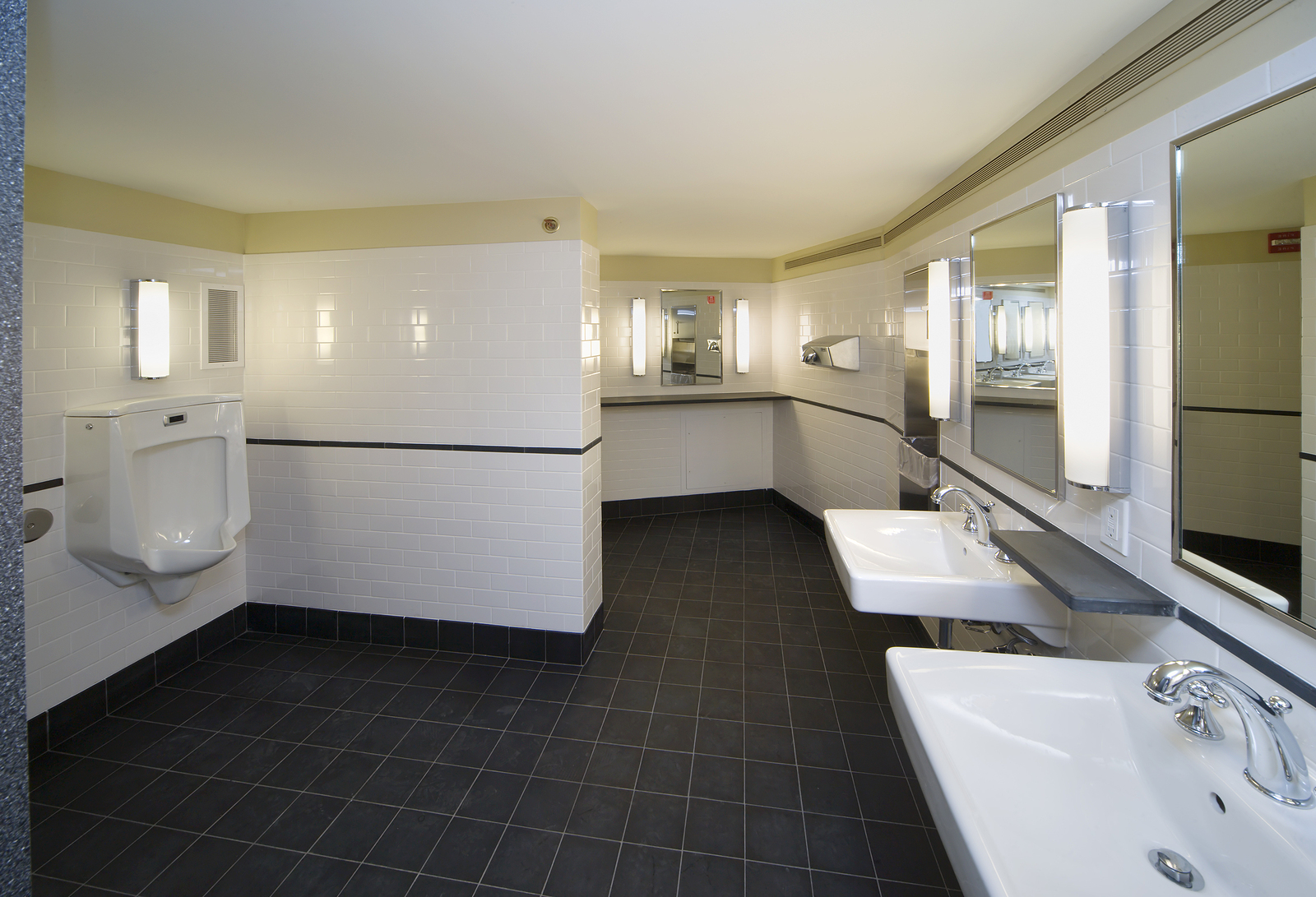

Public washroom design is primarily focused on access, because the ability for most people to access urban environments is shaped by the availability and design of basic hygiene facilities.
Part of the reason why washrooms and toilet cubicles are designed with the dimensions and materials that they are is to meet building regulations and legal requirements, but another part of this is to ensure that people can live, work and socialise in confidence wherever they go and whatever their needs.
A fundamental principle behind the development of the regulations as written is to forward the concept of universal design, where public spaces, buildings and facilities can be used by anyone without the need for adaptation.
One of the greatest champions for this was Selwyn Goldsmith, and he would become a critical figure in shaping the design of not only washrooms but urban spaces as a whole.
Designing For All
Whilst there were several figures who were pivotal to the establishment and proliferation of universal design, none were perhaps more important than architect Selwyn Goldsmith.
After contracting polio in 1956, which left him with lifelong paralysis down his right side, Mr Goldsmith wanted to use his recently acquired degree in architecture to make a difference and try and improve the lives of other people with disabilities.
He coined the term Design for All (DfA) for the creation of services and products that as many people can use without the need for adaptation or specialised provision, which could exclude people from spaces where these adaptations were not available.
This led to the publication of the book Designing for the Disabled in 1963, a highly influential series of guidelines for how architects can design buildings to ensure that every part of their building is accessible to everyone.
The book became absolutely vital for architects and was revised and republished multiple times in the decades since.
Whilst the most famous and immediate impact of Designing for the Disabled was the implementation of the dropped kerb, it also emphasised the widespread benefits of DfA; whilst it immeasurably helped disabled people travel, it also helped parents with prams, children and people with more hidden disabilities.
In preparation for his work on a second edition from 1964 until 1967, he chose a city to represent the general issues found in a typical urban landscape.
That happened to be Norwich, which became home to the first universally accessible public washroom in the country.
The Norwich Project
His work in Norwich led to the development of dropped kerbs, but at the same time, his interview work with nearly 300 people with disabilities highlighted another major priority for Mr Goldsmith.
Castle Hill became the site of the first disabled access public washroom in the country, providing accessible facilities in public for the first time, and finally starting the slow but essential process of removing the washroom leash that had affected people for far too long.
These two initiatives were very successful in their own right, but their universally positive effects led to Mr Goldsmith exploring accessibility from a different perspective, which dovetailed into the principle of universal design.
He would get a chance to expand his idea when he worked with the Department for the Environment, a position he would hold for two decades.
It would also lead to Mr Goldsmith’s increased focus on washroom access specifically, as his work on universal design led to fundamental changes in the treatment and care of disabled people more broadly by the 1980s.
Ps and Queues
In 1989, Becky and Selwyn Goldsmith married, and one of their first projects together was to research the disparity in washroom access to work out why women frequently had to queue for toilets, whilst men did not.
The results were shocking; some buildings had less than half the number of women’s washrooms as men, something that has improved over the following decades but continues to be an important consideration for architects and building managers.
All of these individual initiatives would link into both universal design, revisions to the Building Regulations and the Equality Act, which enshrined into law much of the spirit of the work Mr Goldsmith had undertaken.
Mr Goldsmith sadly passed away in 2011, as did Mrs Goldsmith in 2017, but both of their influences on the size, shape and provision of washrooms in public spaces cannot be overstated.
When Mr Goldsmith originally worked on the Castle Hill accessible toilet, the concept of prioritising disabled access was new in the UK, but his impact was quick and significant.





